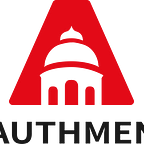NFT (Non Fungible Token) refers to a kind of unique digital assets whose ownership is transferred on the chain (such as Ethereum blockchain). NFT can be used to represent everything from digital goods (such as goods existing in a virtual world) to ownership of physical assets (such as clothing or real estate).
The smallest unit of NFT is 1, because its uniqueness makes it indecomposable — it can’t be divided into 0.1 or 0.0001 like BTC or eth. Just like there are no two same leaves in the world, NFT is unique, so it is difficult to make a standard value evaluation of NFT. This feature of NFT naturally fits in with the field of art and collection, so NFT first became popular in the art industry and began to be known by the public.
With the gradual acceptance of NFT works of art by more and more people, the security problem of NFT storage has become prominent. For example, recently, the encrypted art platform VIV3 has been attacked by hackers, and the official website has been shut down. As a result, users who previously bought art on the platform can not log in and extract goods.
The ideal NFT is completely decentralized, but NFT assets are often accompanied by many attributes. NFT metadata and its rich description may be very cumbersome, usually in the form of image, PDF or video and other unstructured data. At present, blockchains such as Ethereum and flow are not designed to store big data, so NFT developers often host these data on centralized cloud services such as AWS or Google cloud.
In other words, NFT is only the ownership certificate of artwork, but this artwork, or JPEG or video file, exists on a centralized server.
If the buyer wants the source file, he has to extract the file from a specific website through an HTTP address. This way of saving NFT assets by linking to the URL of the centralized server is obviously contradictory to its original intention. People who provide this kind of centralized service can decide whether to delete the content of NFT. In addition, hacker attacks and security review are also problems that can not be ignored.
The decentralized storage of Authmen can solve the storage problem of NFT. Because centralized storage is often limited by data content review and data sovereignty. The Authmen decentralized network, based on TEE privacy technology and IPFS File protocol, can provide a fair and verifiable storage market, return the ownership of data to the user, at the same time, the reliability of user’s file storage can also be guaranteed, which is naturally more friendly to NFT data.
The authmen NFT storage scheme is content addressing based on IPFS protocol. Content addressing is to calculate the hash value of the content. In the case that no one destroys the file, users can find the closest copy according to the hash value. Even if the server crashes due to some problems, Authmen can also let the buyer retrieve the file from another server, so as to ensure the storage security of artwork.
For example, there are 1000 NFT copies on 1000 servers in the global network. Even if 999 servers are destroyed, Authmen can still find the last copy. Authmen can judge whether an NFT is owned by a buyer according to the hash value.
The completely decentralized storage of NFT can make the participants in NFT ecology hold or trade more safely without worrying about the deletion or loss of assets due to ownership problems.
In terms of incentive model, based on TEE technology, Authmen provides an economic and reliable decentralized storage market. In this market, the user initiates a storage order, and the Authmen network node can store the file according to the order requirements. If the file is lost, the node will also face the punishment of the network.
Therefore, based on Authmen, NFT storage and transaction will be simpler. NFT developers and asset owners only need to focus on their own business or asset value, and hand over data storage to a decentralized network such as Authmen, so as to jointly promote the healthy development of NFT ecology.
